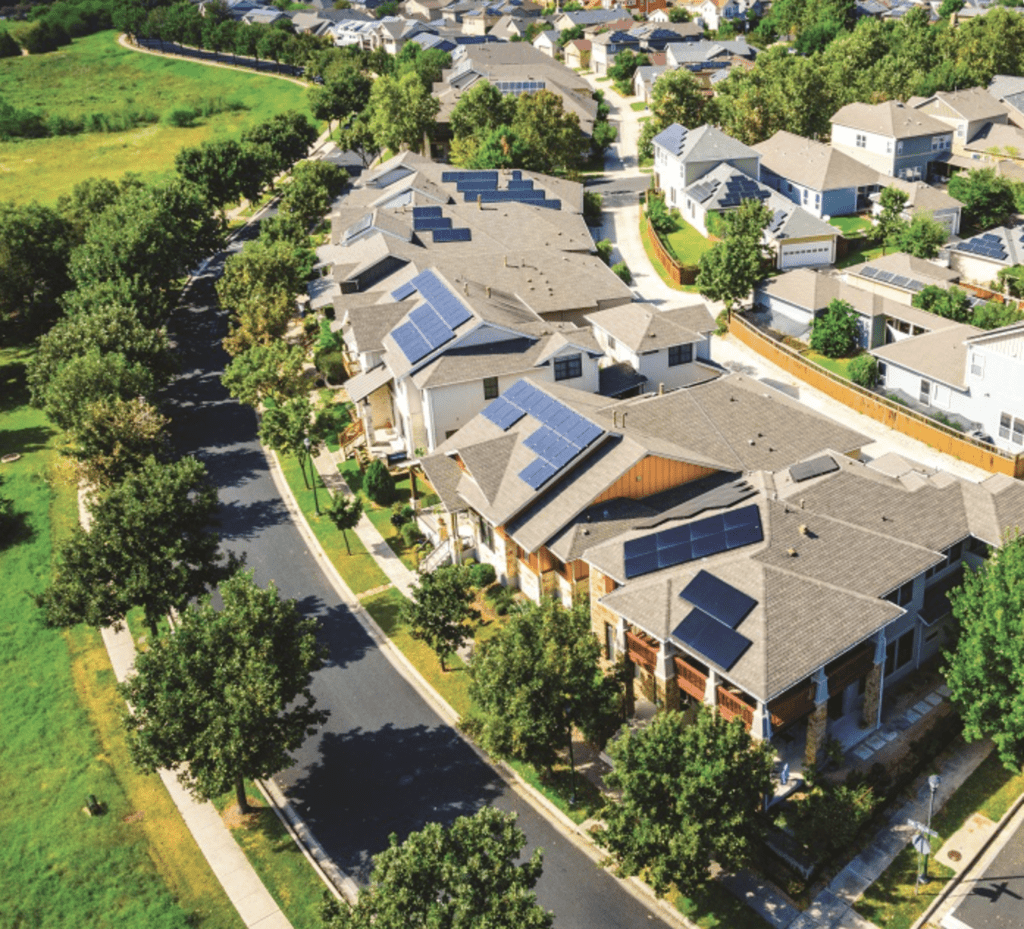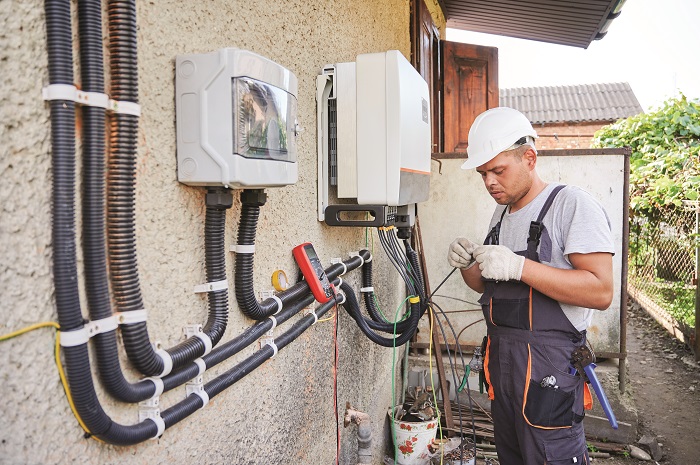Jul 17, 2023
How Does Community-Friendly Solar Development Work?
Focusing on communities from the start of developing energy projects will not only create better outcomes for the communities but also will decrease risk and improve the bottom line.
By: Matt Cox

It’s time to think differently about the relationship of local communities to energy production. The well-being of communities that house power plants or solar and wind farms hasn’t always been viewed as essential for projects’ success. It’s time for that to change.
Focusing on communities from the start of developing energy projects will not only create better outcomes for the communities but also will decrease risk and improve the bottom line. It might sound counterintuitive, but hear me out.
A huge transformation of the energy system is underway. In 2021, the United States experienced its sixth consecutive year of growth in renewables, reaching about 20% of total electricity generation. Last year was the first one when global investment in renewables outpaced the dollars spent on electricity from fossil fuels.1 Renewables are the present and future of energy.
At the same time, utility regulators have begun updating their century-old mandate of “just and reasonable” rates to explicitly incorporate specific socioeconomic concerns like public health and energy burdens. These changes came in the wake of the murder of George Floyd, which resulted in amplified and accelerated demands to end systemic racism and oppression in the United States.
Low-income communities and people of color bear a disproportionate amount of the cost of the U.S. energy system.2 They are more likely to live near power plants, suffer exposure to toxic pollution, and experience higher energy burdens.
Because these energy and healthcare expenses take a bigger chunk of their paychecks, families in these communities are more likely to skip meals;3 live with worse health outcomes;4,5 face eviction, foreclosure and displacement;6 and have reduced economic mobility.7 The energy system has replicated this pattern all over the country. That system needs an overhaul.
Solar farms are vast undertakings requiring huge capital investment ranging from a few million dollars to hundreds of millions of dollars. They also create an opportunity to address many of the equity challenges noted above because of their cost advantage and the fact that they create almost zero emissions. Managing risk is vital for helping these projects come to fruition.
Investors are increasingly using strong environmental, social and governance (ESG) metrics as indicators to assess risk. However, they often overlook the interconnected nature of these three pillars and only focus on one, which limits their full potential. Further, ESG metrics are often politicized, including a ban in some states while others promote ESG metrics. This conflict between state legal requirements and risk reduction and good management practices seemingly poses a challenge.8 What if the practical business case for ESG changed? What if it already has?
Imagine siting a project with an equitable process in mind. Historically, site selection was driven by a number of factors like low costs, favorable tax rates, and a remote possibility of local pushback. Imagine starting with an explicit commitment to understanding community needs and concerns, seeking sites based on both resource availability and the ability to deliver environmental and climate justice benefits.
Equity requires finding and engaging with these communities. Tools like the Greenlink Equity Map help locate places with the highest social and environmental burden. Real progress starts with a commitment to repairing broken systems, combining community-specific data with lived experiences and needs.
By engaging early and frequently, both developers and residents can establish a shared set of facts and considerations, greatly reducing frictions encountered when projects experience delays or changes. Not taking those steps can lead to disinformation and opposition, sometimes injected from outside of the community, when the projects could have been embraced locally.
Research on participatory processes shows that they lead to more successful and resilient outcomes in the long run when compared to situations where the community was simply informed or completely left out. The combination actually fortifies a project’s viability and reduces the risk of outside forces derailing the project.
In Atlanta, Georgia, Greenlink Analytics worked with the municipal government to figure out how to increase clean energy use. The city is the area’s biggest property owner, with several hundred buildings under its control. After several town-hall-style meetings over a few months, it became clear that community concerns could be addressed and people wanted more clean energy, job creation and improved public health.
The resulting Clean Energy Atlanta plan received the unanimous support of the Atlanta City Council and the backing of thousands of residents. Atlanta’s goal is now to achieve 100% clean electricity community-wide by 2035; several megawatts of solar have been deployed already, with many more to come.
These efforts and processes are expanding across the country, which gets us back to the investment landscape. Community relations are a part of the “S” score for an ESG evaluation. Running a better public process leads to improved community relations and thus increases the overall attractiveness of a company. This is applicable across the political landscape, too, with renewable energy retaining a strong economic case as a least-cost resource.
Taking a broader view of risk mitigation creates a mechanism to improve project viability and community outcomes at the same time. The incentives of the private sector can align with efforts to build stronger communities on the way to a stronger democracy.
2022’s Inflation Reduction Act (IRA) takes this opportunity to simultaneously improve equity and investability and kicks it into hyperdrive. The IRA is the biggest influx of climate spending and incentives in our country’s history. Renewable energy projects can receive tax incentives when built in disadvantaged communities and energy communities with brownfields, high fossil fuel-related employment, or closed coal plants and mines. It is now possible for tax credits to offset more than 50% of the investment cost of the projects.
The Internal Revenue Service issued guidance on some of these incentives and more is yet to come. The upshot is that the time is now to build a future where every community, especially those that have been left out historically, has a voice and can fully realize and experience the benefits of the clean energy transition.

Sources
- https://tinyurl.com/5n7nkrxn
- https://tinyurl.com/yckvm82b
- https://tinyurl.com/2wzsf79n
- https://tinyurl.com/2p82snje
- https://tinyurl.com/mpw8vw5c
- https://tinyurl.com/pmmmjudd
- https://tinyurl.com/y6zethau
- https://tinyurl.com/yc34nxwj
This article was originally published in Solar Today magazine and is republished with permission.





